2022 MXA 250 FOUR-STROKE SHOOTOUT: THE TRUTH WILL SET YOU FREE…TO GO FASTER
There are truths and untruths about every bike that rolls off the showroom floor. Our job at MXA is to unveil those for you. It is no easy task by any stretch of the imagination. We have to put ourselves in your shoes, meaning we have to live with the race machine of your choice, as you would. We have to ride it, work on it, break it, maintain it and find the best settings that suit your needs. We just speed up that process tenfold by having an army of experienced test riders ranging in skill level, age and size who ride and race these bikes each and every week.
Each bike comes with its own set of challenges. Some bikes wear their heart on their sleeve, while others have the ultimate poker face. At times, it feels like we are Sherlock Holmes looking for clues, conducting interrogations, examining records, gathering evidence and forming theories that we put to the test. The MXA detective team tries to disprove all unreliable theories. This method gives us the best chance at finding the truth about each bike. The search for the truth is the secret sauce of testing. Perhaps this is why our tests can be so different from others. We are constantly trying to disprove the things that everyone thinks they know about a given machine. The truth constantly changes when you live with a bike—and we lived with these seven 250cc four-stroke bikes for many months and many races and have disproven many hypotheses. Anyone who has ever owned a race bike knows this simple truth.
THE SEVEN BIKES
This year’s MXA 250 four-stroke shootout includes seven race machines. In the 1970s, we had unlimited bikes to compare in our shootouts, but one by one they began to disappear. The list shrunk as Maico, CZ, Bultaco, Ossa, BSA, Greeves, Rickman, Montesa, Monark, Hodaka, Can-Am, ATK and Rokon faded out. After that, it was just the “Big Four” Japanese brands (Yamaha, Kawasaki, Honda, Suzuki) that we invited to our shootouts. When the then-small KTM brand became viable, the “Big Four” turned into the “Big Five.” More than a decade went by with MXA having five-bike shootouts (a guest appearance from the Italian-made “Redhead” Husky TC250 was temporary).
It wasn’t until 2013 that Stefan Pierer bought Husqvarna (mostly for its historic name) and moved Husky to Austria to platform-share the already proven KTM engine and chassis, bumping the count of our 250 shootout to six brands. Then, in 2020, Stefan Pierer pulled the same stunt and bought the Spanish GasGas brand, only to ditch the Spanish factory and add a third brand to the Mattighofen assembly line. GasGas brought our shootout count to seven brands.
Are we saying that there are three identical engines and chassis in this shootout? Yes. The KTM, Husky and GasGas 250 four-strokes are essentially triplets; however, they are not identical triplets. Each of the three Austrian bikes has its own character, making each bike different on the dyno and the track. For 2022, the only internal updates the triplets got were a bushing on the counter-balancer shaft for added durability.
We don’t have to remind you that 2022 was an odd year. There was only one bike that received any major changes—the 2022 Honda CRF250. The other six bikes were warmed-over repeats from the 2021 playbook. It wasn’t all for naught at other brands, though, as the YZ250F got a new rear hub, wider 2.15 rear rim, 110/19-width rear tire and a cross-three spoke pattern. The Husqvarna FC250 got a hydraulic clutch mechanism update from Magura to Brembo parts. GasGas, Suzuki, KTM and Kawasaki were basically BNG bikes.
You might think that with six of the seven bikes being clones of last year’s machines the “2022 MXA 250 Shootout” would be a cakewalk for the test riders, but you forgot the fly in the ointment—the CRF250. The new Honda was an unknown quantity that could shuffle the results of the MXA shootout from top to bottom. Even if it didn’t take the top step on the shootout podium, it was destined to be a spoiler that moved some brands down from last year’s spot. Here is how the seven bikes ranked.
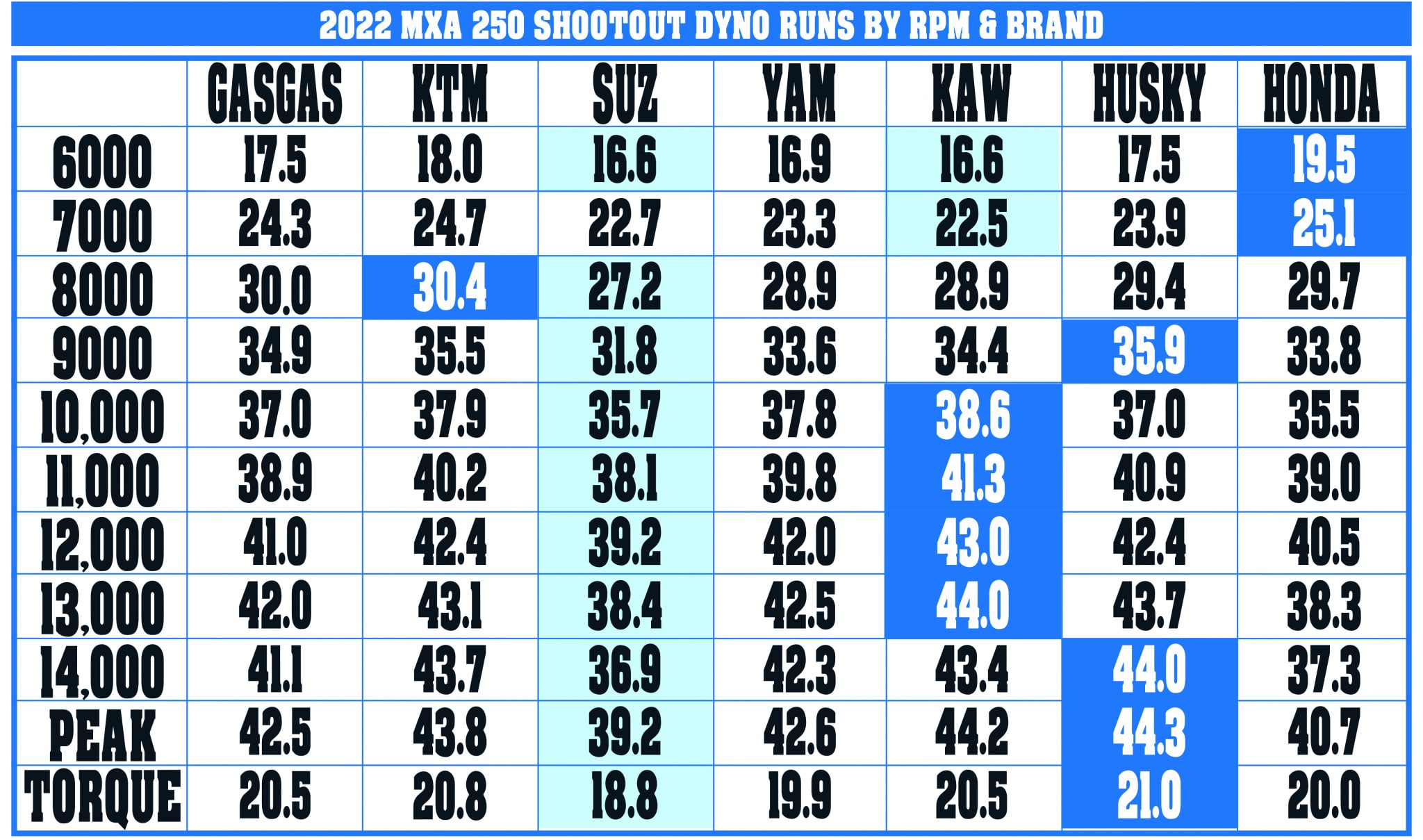
There are 11 categories on MXA’s dyno chart that cover horsepower by brand at 6000 rpm, 7000 rpm, 8000 rpm, 9000 rpm, 10,000 rpm, 11,000 rpm, 12,000 rpm, 13,000 rpm and 14,000 plus peak horsepower and torque. The blue boxes signify the bikes that are the best in that 1000-rpm range, while the light blue boxes show the bikes that are the worst in each rpm category. Ten of the light blue boxes are attributed to the Suzuki RM-Z250. The Kawasaki KX250 gets the 11th box for its weak performance at 7000 rpm (and it ties Suzuki at 6000 rpm for the worst).
WHICH BIKE MAKES THE MOST POWER?
Max power isn’t the end-all, be-all. Usable power is what the game is all about now. A bike with the most peak power that doesn’t have any low-to-mid thrust is destined to be a loser. We can’t blame manufacturers for embracing peak horsepower as a sales tool, but the luster doesn’t last long if the bike doesn’t live up to the brochure. The 250 field is split evenly between high-rpm screamers and low-to-mid torquers, but, surprisingly, some of the screamers make more midrange power than the torquers. Conversely, none of the low-to-mid engines (Honda, Yamaha and Suzuki) can compete when the rpm climbs to stratospheric levels.
Who is good where? From 6000 rpm to 8000 rpm, the Honda CRF250 is the best, but, surprisingly, the high-rpm KTM, Husqvarna and GasGas hold down second, third and fourth places in the 6000 rpm to 8000 rpm horsepower derby. That leaves the Yamaha, Kawasaki and Suzuki in fifth, sixth and seventh in low-to-mid power.
When you move up the rpm scale to find out who makes the best power from 9000 rpm to 11,000 rpm, Honda has dropped from first to seventh, while the Kawasaki KX250 is the strongest engine in the midrange; but, it shares the spotlight with the Husqvarna and KTM. The worst bikes in the 9000 to 11,000 rpm range, which on 250cc engines would be considered mid-to-top power, are the Yamaha, Honda and Suzuki.
There are no surprises on top-end power (from 12,000 rpm to 14,000 rpm). The Husqvarna, Kawasaki and KTM take the cake. The Yamaha YZ250F is fourth, GasGas fifth, Honda sixth and Suzuki seventh.
Peak horsepower is very similar among Husqvarna (44.3 horsepower), Kawasaki (44.2 horsepower) and KTM (43.8 horsepower). The other four brands don’t have a great high-rpm game. The Yamaha (42.6 horsepower) is fourth, GasGas (42.5) fifth, Honda (40.7 horsepower) sixth and Suzuki (39.3 horsepower) seventh.
The takeaway from this analysis is that the Honda is the strongest down low. The Kawasaki is the strongest in the middle, and the Husqvarna is best on top.
WHO HAS THE BEST BRAKES?
In the class of 2022, braking is more about modulation than power. Braking power will always be a big part of stopping, however, we aren’t living in the days when you needed to clench your entire fist over the brake lever to slow down with dated drum brakes. For each of the seven bikes in this shootout, you can get the maximum braking power with only one finger. That fact shifts the conversation from power to sensitivity at the lever.
You can’t judge brakes by the size of their rotors, because while Brembos have reigned supreme for more than a decade, the Japanese competition kept going bigger and bigger with their front and, in some cases, rear rotors, to try to match Brembo. Big rotors might produce more pucker power, but they do it with a loss of modulation. Big 270mm rotors look good in sales brochures, but KTM’s 260mm front rotor doesn’t just work when the lever is pulled hard; it also works when the lever is lightly touched. Hands down, the Austrian trio offers better stopping power and modulation than its competition.
WHO HAS THE BEST CLUTCH?
It is no secret that the Japanese brands have been slow in updating their cable clutches to self-adjusting hydraulic clutches for years. Why? Cost. KTMs have always cost more due to their premium parts, such as electric starters, hydraulic clutches, steel clutch baskets, braided steel hoses, finger follower valve trains, CNC-machined triple clamps and a focus on light weight. Each of these parts had teething phases, but KTM ironed them out. Every factory has pencil pushers who automatically blackball any idea that ups the retail price significantly—out of fear of pricing the bike out of their customers’ budgets. But, KTM’s expensive tech won the day, and slowly but surely the blue, green, red and yellow brands started to turn orange.
The Austrian triplets have the best clutches in their class. The Austrians have lived with hydraulic clutches for many years and constantly refined them to perfection. The Japanese competition is still going through the teething phase with only the Kawasaki KX250 adopting a hydraulic clutch system.
WHICH BIKE IS THE LIGHTEST?
“Weight doesn’t matter.” We are honestly tired of hearing this. Weight matters in airplanes. Weight matters in Formula 1 cars. Weight matters in road bicycles. Weight matters in hot air balloons. Face it! Weight matters in motocross bikes. We understand the argument that parts have to be structurally sound in order to stand the test of time; however, this is where the competitiveness among brands can lead to new and unique ways to save weight.
If you have ever lost or gained 10 pounds, you have felt the difference when you go for a run or even a long walk. Your dirt bike feels the same way when it loses weight. It is more agile, and its parts are less stressed. This is the reason the factory teams spend millions of dollars trimming every gram they can.
Getting to the point, the Austrian triplets are one, two and three in this category, with the all-new 2022 CRF250 tied for third with the FC250 at 219 pounds. The used-to-be-last RM-Z250 is now tied for fifth, with the suddenly plumper 2022 Yamaha YZ250F hitting the scales at 227 pounds. The KX250 added electric start and a hydraulic clutch in recent years without losing weight to compensate for adding weight. The result? The KX250 is now the heaviest bike in the class at 228 pounds.
2022 250 BIKE WEIGHT (FROM LIGHTEST TO HEAVIEST):
1. GasGas MC 250F: 217
2. KTM 250SXF: 218
3. Husqvarna FC250: 219
4. Honda CRF250: 219
5. Suzuki RM-Z250: 227
6. Yamaha YZ250F: 227
7. Kawasaki KX250: 228
WHICH BIKE HANDLES BEST?
There are a lot of contributing factors that affect the handling of a motorcycle. Suspension, fore/aft balance, chassis rigidity, engine placement, overall weight, bodywork, seat height and head angle, and many other small things all add up.
For 2022, the only Japanese bikes that can compete with the Austrian triplets are the Honda CRF250 and the YZ250F. The Yamaha comes to the table with a balanced chassis with both the front and rear wheels getting good traction without any funny business like head-shake, understeer or oversteer. The YZ250F’s Kayaba SSS components, front and rear, complement the chassis. On the other side of the coin, the YZ250F is bulky, wide and heavy. It takes some getting used to the big feel of this machine.
Meanwhile, the Honda CRF250 has abundant potential, ruined by an out-of-balance feel, harsh forks and a soft rear shock. Described as a “fast YZ250F,” the Honda has impressive low-end thrust and is extremely comfortable and ergonomically perfect with solid geometry numbers. It would handle great with Kayaba SSS suspension—dream on.
When it comes to the best blending of all the factors, the three-bike Austrian juggernauts do it best. The triplets offer a supremely agile chassis, light weight, perfect fore/aft balance, resilient chromoly steel frames and, for those who take the time set it up properly, good suspension. Out of the three Austrian bikes, the Husqvarna FC250 sticks out due to the lowered chassis. The lower ride height gives the FC250 a more agile and connected feel to the ground. It turns sharper, and the WP AER air forks work superbly under its chromoly chassis.
WHO HAS THE BEST SUSPENSION?
MXA was concerned that Yamaha might have taken the wrong path by making its SSS forks racier in 2021–2022. By “racier,” we mean that the SSS forks ride higher in their stroke than before, making them feel stiffer. There is a give and take in Yamaha’s decision. This setup works best for more advanced racers, but some of our fastest test riders preferred the plusher YZ250F setup of 2020. Still, even with that criticism, the SSS forks are the best in the business. Although few people believe it because of WP’s checkered past, the KTM, Husqvarna and GasGas suspension take second, third and fourth (largely because it would be hard for them to be as bad as the forks that Honda, Suzuki and Kawasaki offer).
WHICH BIKE IS THE CHEAPEST?
A bike’s MSRP is generally very different from what you write on the check at your local dealer. The more in demand a bike is, the less bargaining power you have to whittle down the “junk costs” that your friendly local dealer tacks on in the fine print. The MSRP does not include shipping or freight. And worse yet, the dealer is free to charge as much or little as he wants as a setup fee (and setup refers to taking the bike out of the crate and putting the front wheel and handlebars on). Paying a ridiculous setup fee is akin to buying a new computer and then having the computer salesman tell you that there will be an extra charge for the power cord and taking the protective film off the screen. Never commit to buying a new bike without a complete explanation of all the charges, including sales taxes. It is always an unsettling feeling to find that your $8000 purchase costs $9000.
The cheapest bike in our seven-bike shootout is always the one that will give you the most bargaining power—and that is the 2022 Suzuki RM-Z250. The Suzuki RM-Z250 will probably be the only new bike on the showroom floor that you can buy for less than the advertised MSRP price.
2022 MSRP 250 PRICES (FROM MOST TO LEAST)
1. Husqvarna FC250: $9499
2. KTM 250SXF: $9399
3. GasGas MC 250F: $8699
4. Yamaha YZ250F: $8499
5. Kawasaki KX250: $8399
6. Honda CRF250: $8099
7. Suzuki RM-Z250: $7899
FIRST PLACE: 2022 HUSKY FC250
WHY SHOULD THE HUSKY FC250 WIN THIS SHOOTOUT?
It makes undeniable sense that the 2022 Husky FC250 would win MXA’s shootout for the second year in a row. Why is it undeniable? Because six of the seven bikes in this shootout are essentially the exact same bikes as last year. The only bike that is all new is the Honda CRF250, and it would have to be a superior machine to topple last year’s Bike of the Year. It’s not.
The FC250 wins this shootout not because it excels in one piece of the puzzle, but because it is the best overall package for the widest range of riders. It is hard to say anything bad about it. And if you pick it apart, like we have, you’ll find the two biggest issues can be fixed with a drill and a $20 countershaft sprocket.
This Husky FC250 makes the most peak power on the dyno at 44.3 ponies at 14,000 rpm while also being in the top three in horsepower across the majority of rpm ranges from 6000 rpm on up to 13,000 rpm. It is no slouch off the crack of the throttle from 6000 rpm to 8000 rpm either. The Austrian engine is the only do-it-all engine. From bottom to middle to top, it has it all, while the four Japanese-made brands have good bottom or good top but not both (and sometimes neither).
On top of the potent engine, the FC250 is littered with premium parts like Brembo brakes, electric starting, D.I.D. Dirt Star rims, a no-tools airbox, bulletproof clutch, braided steel hoses, inline fuel filter, Pankl transmission, hour meter, optional throttle cams, ODI grips, Pro Taper handlebars and, new for 2022, a swap from Magura clutch hydraulics to Brembo components.
The chassis does everything right, and the new generation WP suspension (front to rear) makes the package even sweeter; however, what pushed this bike to the winner’s circle was the 1-inch-lower chassis. This brought the handling and suspension performance up to a whole new level. It turned more accurately than the other six contenders (including its orange and red stablemates) and was more agile at speed. The WP suspension components were very good in the hands of riders who knew how to set them up.
WHY SHOULD THE HUSKY FC250 LOSE THIS SHOOTOUT?
We don’t think the powers that be at KTM ever wanted the Husky FC250 to beat the KTM 250SXF. Ever since the Austrian juggernaut built its first Husqvarna in 2014, the engineers have purposely detuned the FC250 engine by closing off the airbox more than on the KTM 250SXF. This is a dirty trick that cuts down the FC250’s throttle response from low-to-mid, but it is nothing that a drill can’t fix by allowing more air into the engine. In a better world Husky would have done it for us. Another Husky flaw is the super-tall gearing that comes standard on the FC250. If you want more bottom, just go down one tooth on the countershaft sprocket or up one tooth on the rear sprocket and you will get the bottom-end grunt of any bike on the showroom floor.
WHAT DO WE REALLY THINK OF THE HUSKY FC250?
This is a bike that our entire cadre of MXA test riders can hop on, fire up and go fast on immediately. It is hard to find anything to complain about.
SECOND PLACE: 2022 KTM 250SXF
WHY SHOULD THE KTM 250SXF WIN THIS SHOOTOUT?
In a Pro-only world, the 2022 KTM 250SXF would win this shootout. The 2022 KTM 250SXF is pro-oriented, whereas its biggest competition, the Husky FC250, is better suited to a wider range of riders. We don’t think the powers that be in Austria wanted the Husqvarna to win and are still scratching their heads as to why it beat out their favored KTM 250SXF breadwinner in this shootout. How did the FC250 edge out the KTM 250SXF? That’s simple. KTM was hoisted by their own petard! They allowed Husky to gamble on lowering the chassis by 1 inch with shorter forks and a revised rising-rate shock linkage while still reaping the rewards of sharing all of KTM’s top-end components. Even the purposely choked off Husky airbox backfired on KTM, because it made the FC250’s overall powerband feel broader and more usable.
Don’t get us wrong, the KTM 250SXF is a great bike, highlighted by its snappier throttle response, higher ride height and firmer feel at speed. Where the 250SXF beats the FC250 is in acceleration from gear to gear. The 250SXF revs through its gears quicker and with more authority. Yes, Virginia, the engines are identical, but the amount of air coming into them isn’t. The KTM gets more air, thanks to bigger vents in its airbox, making the powerband perkier.
WHY SHOULD THE KTM 250SXF LOSE THIS SHOOTOUT?
The KTM 250SXF engine is long in the tooth. How long? Bugs Bunny’s buckteeth long. We don’t like that this powerplant was neglected for six years, but we still marvel at how this dated engine remained the best in the 250 class in spite of its age. It is as though KTM was egging the Japanese manufacturers on to give them hope. That hope might be smashed by the all-new, big-bore, short-stroke, 81mm x 48.5mm bore-and-stroke 2023 KTM 250SXF engine. Better yet, the KTM engineers went all out to push the technological envelope in 2023, making the 2022 KTM 250SXF a lame duck on the showroom floors.
Both the FC250 and 250SXF are significantly more expensive than the highest-ranked Japanese 250F, the Yamaha YZ250F. For that price, the KTM is 9 pounds lighter, makes more horsepower than the YZ250F in every rpm range from 6000 rpm to 14,000 rpm, and has a finger follower valvetrain, sleeker ergos and incredible Brembo brakes and clutch. Yamaha’s most valuable asset is not weight, horsepower, finger followers, ergos, clutch or brakes; it is Kayaba SSS suspension.
WHAT DO WE REALLY THINK OF THE KTM 250SXF?
The 2022 KTM 250SXF was just a tick off from winning the “2022 MXA 250 Shootout.” You could say that it got beat because the Husky was better for short riders and Vets and delivered a broader, more rider-friendly powerband—and you’d be right. The KTM 250SXF is the Pro version of the Husqvarna FC250.
THIRD PLACE: 2022 YAMAHA YZ250F
WHY SHOULD THE YAMAHA YZ250F WIN THIS SHOOTOUT?
MXA fully understands that the 2022 YZ250F is the best bike for many riders, but the handling of the YZ250F is dull in comparison to the FC250 and 250SXF. This may sound bad, but for riders who don’t want their chassis to be super reactive, this is the bike. When ridden properly and set up right, the YZ250F offers autopilot-style handling. You don’t have to worry about over-steer, understeer, the rear stepping out or the front end pushing. The YZ250F does nothing great and nothing wrong. For many lower-level riders, this autopilot setting is a win-win. Hardcore Pro racers will wish that they could override the YZ250F’s autopilot limits. In high-stress situations, the Yamaha will take the safe line, while the Austrian trio will effortlessly hop, skip and jump from line to line; but, that chassis quickness comes with the risk of paying the penalty of super accuracy. The YZ250F is less likely to generate oversteer on the inside line; it is easier to turn because less input equals less effort.
Yamaha’s average handling is aided immensely by three YZ250F features: (1) The YZ250F’s powerband makes its best power now, not later. It is very effective on corner exit. (2) We have loved the Kayaba SSS suspension for 16 straight years. It soaks up energy from terra firma magnificently. Feedback from braking bumps or acceleration chop is non-existent. The rear end hooks up like glue, while there is still enough weight on the front tire to stick on off-camber turns. (3) The 2022 YZ250F tops it off with its Wi-Fi tuning system. It allows riders to choose different powerbands by selecting from Yamaha’s pre-programmed maps or writing their own programs.
WHY SHOULD THE YAMAHA YZ250F LOSE THIS SHOOTOUT?
The YZ250F is big, bulky and heavy. There’s no way around that. Ever since Yamaha reversed the 2014 YZ250F engine and moved the airbox up where the gas tank used to be, Yamaha’s engineers were put up against a wall. How so? It’s been proven beyond a shadow of a doubt that Yamaha’s front-mounted downdraft intake needs more air volume to allow the engine to make optimum power. The YZ250F needs a much bigger airbox and the ability to fit the right size velocity stack between the twin-spar aluminum frame; however, getting more room out of a twin-spar frame equipped with a front-mounted airbox and backwards engine has stymied Yamaha’s YZ250F engineers for the last eight years. To top off the bulkiness, the 2022 YZ250F is 10 pounds heavier than the GasGas, 9 pounds heavier than the KTM and 8 pounds heavier than the Husky and Honda.
WHAT DO WE REALLY THINK OF THE YAMAHA YZ250F?
In motion, the 2022 YZ250F is a great bike. It may have shortcomings on paper, but it is built to last. It spearheaded the low-to-mid powerband profile that Honda adopted in 2022 and is the easiest bike for riders of any skill level to ride fast. As a bonus, it is easy to set up because it rolls off the showroom floor ready to race. Any rider can race this bike.
FOURTH PLACE: 2022 GASGAS MC 250F
WHY SHOULD THE GASGAS MC 250F WIN THIS SHOOTOUT?
The GasGas MC 250F is a no-nonsense machine. It offers the meat and potatoes of the FC250 and KTM 250SXF without the add-ons. You may not get the KTM map switch, hour meter or billet triple clamps, but it is a bargain bike without becoming the redheaded stepchild of its Austrian elders. Offering the same powerful engine, best-in-class Brembo hydraulics, absorbent chromoly chassis and premium WP suspension all at a $700 discount is icing on the cake.
MXA test riders think of the GasGas MC 250F as a do-it-yourself works bike. It rolls off the assembly line as a stripped-down chassis and engine with a stripped-down price. But, the performance magic is all there—GasGas just leaves it up to you to bring it out. It should win this shootout for its simplicity of design and because it brings KTM’s technological leaps to regular racers at a price that is within $200 of the Yamaha YZ250F. We don’t need more doodads; we need functionality. That is what the MC 250F embodies.
WHY SHOULD THE GASGAS MC 250F LOSE THIS SHOOTOUT?
The GasGas MC 250F should lose this shootout because the powers that be in Austria made it slower than its brothers with a different head pipe, closed-off airbox (even more so than the FC250s), only one map, no traction control and no launch control. We don’t like this, but it would be an even bigger mistake for the KTM group if the least expensive of the three Austrian models started winning shootouts. That would be bad for business
Many of our Vet and Novice riders prefer the softer WP suspension, but for faster racers, it dives under braking and bottoms on big hits. This suspension setup will be perfect for the majority of local riders, but most local riders think they are fast. For actual fast racers, the lighter fork valving and 42 N/mm rear spring are too soft. Additionally, the forged triple clamps flex more than MXA test riders would like, giving the front end a vague feeling at turn-in.
WHAT DO WE REALLY THINK OF THE GASGAS MC 250F?
This bike makes sense for people who want the KTM 250SXF package without the high price tag. It is a proven motorcycle that is designed to compete head-to-head against the four Japanese brands, not its Austrian counterparts.
FIFTH PLACE: 2022 HONDA CRF250
WHY SHOULD THE HONDA CRF250 WIN THIS SHOOTOUT?
The CRF250 has been stuck in a rough patch for a long time now. Honda has been all over the map trying different approaches to the CRF250’s index of performance. The problem for Honda was that what they threw at the CRF250 over the last four years didn’t stick. Each new version was a dud. So, for 2022, the all-new CRF250 is a breath of fresh air. Gone are the twice pipes, weak-sister high-rpm powerband and chunky 228-pound dry weight.
The all-new CRF250 is quick at the first crack of the throttle. It gets moving faster and sooner than any 250 in this shootout—and that fact shows on the dyno. From 6000 to 8000 rpm, it is the king of pony power. It does start to lose steam after eight grand, but that initial thrust off idle gets the CRF250 moving with enough authority that the drop in horsepower isn’t a deal breaker as the rpm climb into the midrange. The 2022 CRF250 powerband is the exact opposite of the 2021 power profile. Last year’s CRF250 was fat and sluggish. Not only does the 2022 feel more powerful than it really is, the shift ratios between gears help magnify the minuscule power above 11,000 rpm. Best of all, every MXA test rider loved the CRF250’s ergonomics. Everything is right where it is supposed to be.
WHY SHOULD THE HONDA CRF250 LOSE THIS SHOOTOUT?
The worst part of the CRF250 is the forks. They are harsh and stiff, even for our heaviest riders. We are positive that something got lost in translation between the factory test riders and the suspension engineers. How do we know this? Because no one in their right mind would set up a bike like this on purpose. Last year’s CRF250 was one of the best-suspended bikes in the class. We don’t know how they got so far off the mark when they had such a prime setup to follow.
Aside from the forks, if Honda wants a chance at winning the MXA 250 four-stroke shootout, it needs to offer a broader powerband. We love what they did on the bottom end, but it can’t compete with orange, white and green high revvers on top.
WHAT DO WE REALLY THINK OF THE HONDA CRF250F?
It has a lot of potential. It shed a significant amount of weight from last year and now sits at 219 pounds (tied with the Husqvarna FC250 for third lightest 250). It is the first Japanese 250 to ever get this close to being the lightest bike in the class. It is still heavier than the KTM 250SXF and GasGas MC250F, but it is 8 pounds lighter than any other made-in-Japan 250. That is quite the feat. It still doesn’t have a hydraulic clutch, even though Honda has one on the CRF450. Luckily, Honda’s new nine-plate clutch is the best of the cable-operated units. Every MXA test rider said he would pick the CRF250 engine over the YZ250F’s. As for now, we’ll have to wait until Honda specs forks that the MXA test riders would pick over the YZ250F’s Kayaba SSS forks. There’s always next year.
SIXTH PLACE: 2022 KAWASAKI KX250
WHY SHOULD THE KAWASAKI KX250 WIN THIS SHOOTOUT?
Of all the 250cc motocross bikes that have tried to chase down KTM’s dominance at high rpm, only the Kawasaki KX250 has been successful. The 2022 KX250 doesn’t soundly trounce the Austrian triplets at peak, but it offers the most horsepower in its class from 9000 rpm to 12,000 rpm. It just gets edged out in the final couple hundred revs when it peaks at 44.2 horsepower and Husqvarna slips by at 44.3. We don’t hold that 1/10th of a horse against the KX250 engine, because this is the best Pro engine in our book. It is so strong from the midrange on up that if you have the talent to hold this engine wide open, the 2022 Kawasaki will take you to the top, with enough over-rev to make a difference.
WHY SHOULD THE KAWASAKI KX250 LOSE THIS SHOOTOUT?
It should lose for three big reasons: (1) Low-end power: As strong as the KX250 is from the middle to the top, the KX ranks sixth out of seven in low-end power. Kawasaki’s engineers focused so much on top-end power that they forgot that a great engine can’t bog and stumble on the exit of corners. How weak is the KX250 at low rpm? It gives up 3 horsepower at 6000 rpm, 2.5 horsepower at 7000 rpm, and 1 horsepower at 8000 rpm to the Honda CRF250. (2) 48mm Kayaba forks: Kawasaki lost its way with the forks. The problem lies in the KX250 fork’s mid-stroke damping. The valving ramps up too fast, too soon and too much in the middle to the bottom of the stroke, making the forks very harsh. (3) Cornering: The biggest contributor to the 2022 KX250’s sixth-place finish in MXA’s 250 shootout is its poor handling. When Kawasaki decided to use the KX450 frame for the 2022 KX250, they didn’t take into account that the smaller KX250 engine would have to be pushed way back in the frame cradle (so the swingarm pivot bolt could go through the engine cases). For the life of us, we couldn’t get the KX250 to turn. The KX250 engine was so far back in the KX450 frame that you could stick your whole arm between the down tube and the engine. There isn’t enough weight on the front wheel to get the front end to bite. In the end, test riders starting moving forward, almost onto the gas cap, to get the KX250 to turn. For most test riders, this was a deal breaker, but was the price you often pay with frame swaps.
WHAT DO WE REALLY THINK OF THE KAWASAKI KX250?
Maybe we could live with the total lack of usable low power by gearing it down, carrying more speed into corners or downshifting for extra drive, but we not could find a handling option—short of sitting on the gas tank—to get the KX250 to turn. It pushed on every corner exit. This is a shame, because the 2022 KX250 engine is the only Japanese-made engine that can run head-to-head with the Austrian triplets at high rpm. We wanted to make this chassis work, but save for relocating the engine on our own, we had to accept that the powerplant’s prowess at high rpm was lost to a bad chassis choice.
SEVENTH PLACE: 2022 SUZUKI RM-Z250
WHY SHOULD THE SUZUKI RM-Z250 WIN THIS SHOOTOUT?
It is funny how many newbie testers go out on the RM-Z250 and come back telling us that it is the best bike in our arsenal. We understand what they are feeling, but they don’t realize the truth. What makes the RM-Z250 feel so good is that they can push the RM-Z250 further than other bikes. The low horsepower makes the RM-Z250 a fun bike to ride. The metered power is smooth and gets moving fast. Riders feel good on the yellow machine and that is something worth noting. The RM-Z250 is a turn-at-all-cost machine. It turns when and how you want it to. It is a friendly bike that everyone is surprised about when they first ride it.
WHY SHOULD THE SUZUKI RM-Z250 LOSE THIS SHOOTOUT?
But that surprise turns to shock when they race it. In a race, those newbies who said they loved the RM-Z250 got passed by green, white, red, blue and orange bikes like they were standing still. The love affair was over once they realized that the RM-Z250 is a popgun in a world of Colt 45s. The 2022 RM-Z250 isn’t competitive or relevant in 2022. It doesn’t have the luxury of electric starting. It doesn’t have a hydraulic clutch. It has forks that shouldn’t be on a 250 four-stroke (they would be too stiff on an RM-Z450). It is the slowest bike across the power spectrum save for the Kawasaki KX250 at 7000 rpm, and with only 39.3 peak horsepower, it gives up 5 horsepower to the Husky FC250. The RM-Z250 is a great starter bike; however, the RM-Z250 forks are made for a Supercross racer. It is crazy stiff. The fork setting doesn’t make sense on any 250, let alone one that is best suited to entry-level riders.
WHAT DO WE REALLY THINK OF THE SUZUKI RM-Z250
The RM-Z250 is a viable package for riders moving up from a minicycle. It’s an affordable entry-level bike for a guy who doesn’t have the skill or moolah to manage a 44-horsepower rocket ship, but it isn’t a competitive race bike. To bring it up to snuff with a KTM, Husky or Yamaha would cost $5000 in engine mods alone. Anyone who buys a 2022 Suzuki RM-Z250 has to be content with the power it makes, because hopping it up is money wasted. And, the reality is that for $200 more you can be riding a vastly superior 2022 Honda CRF250.


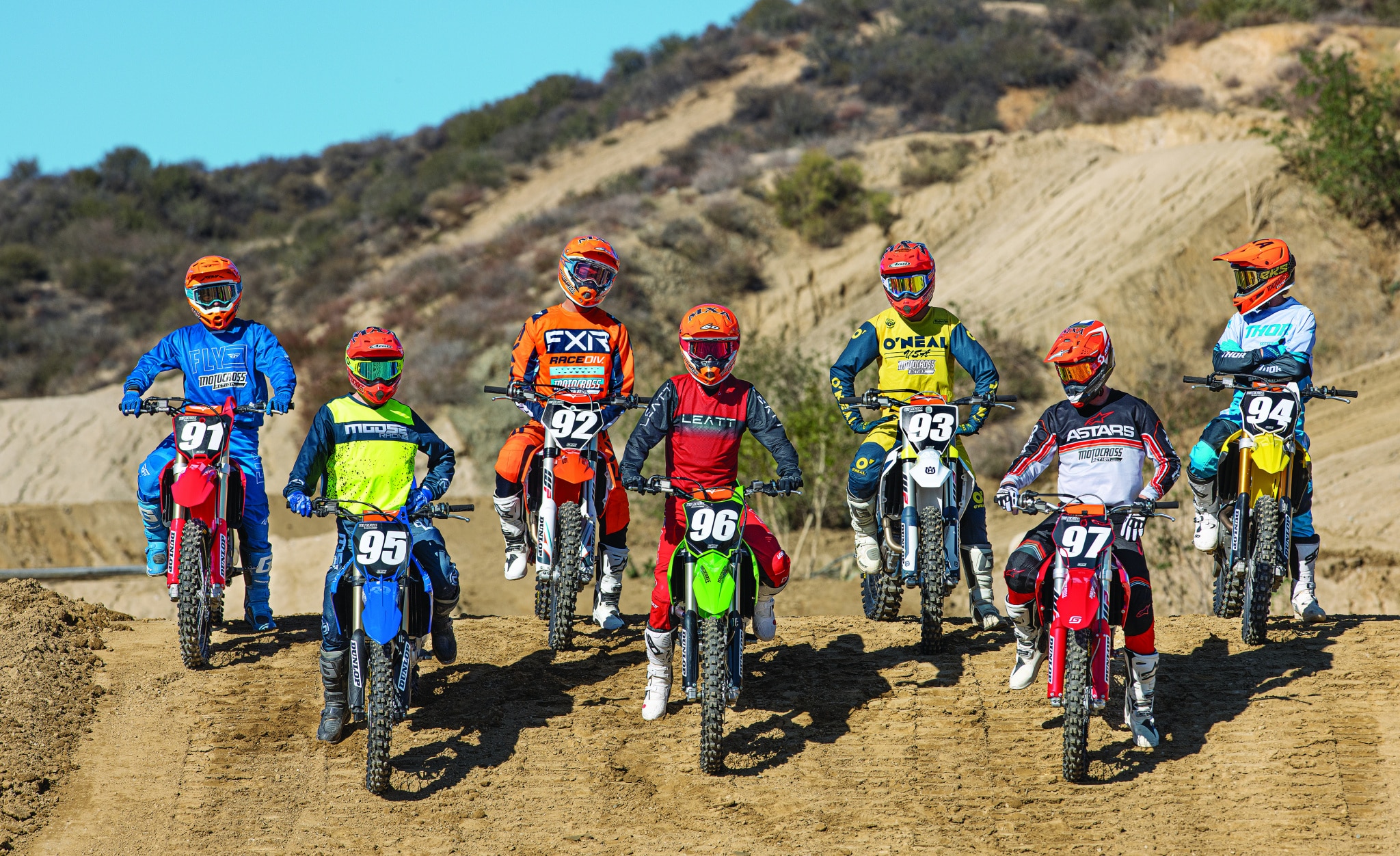
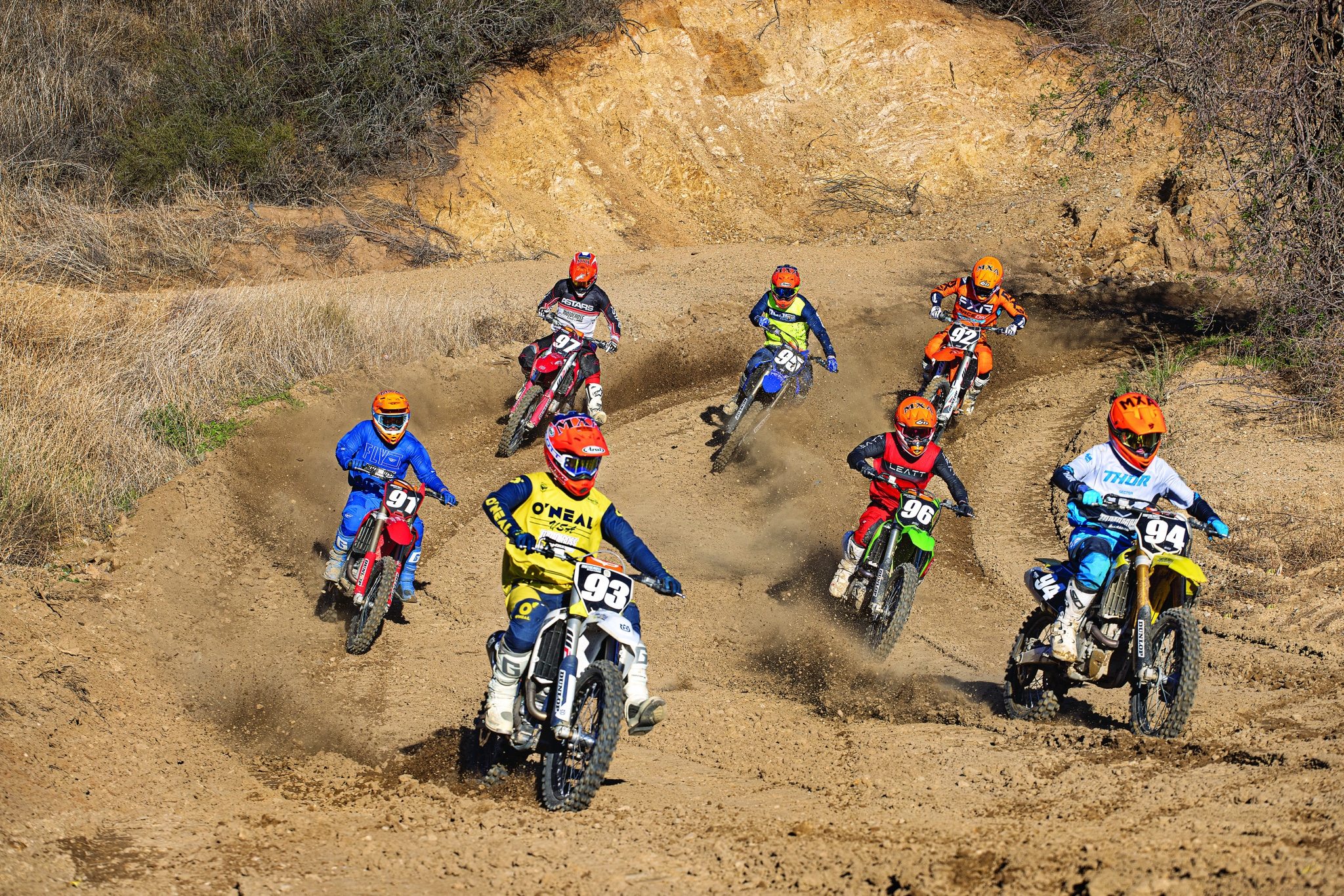
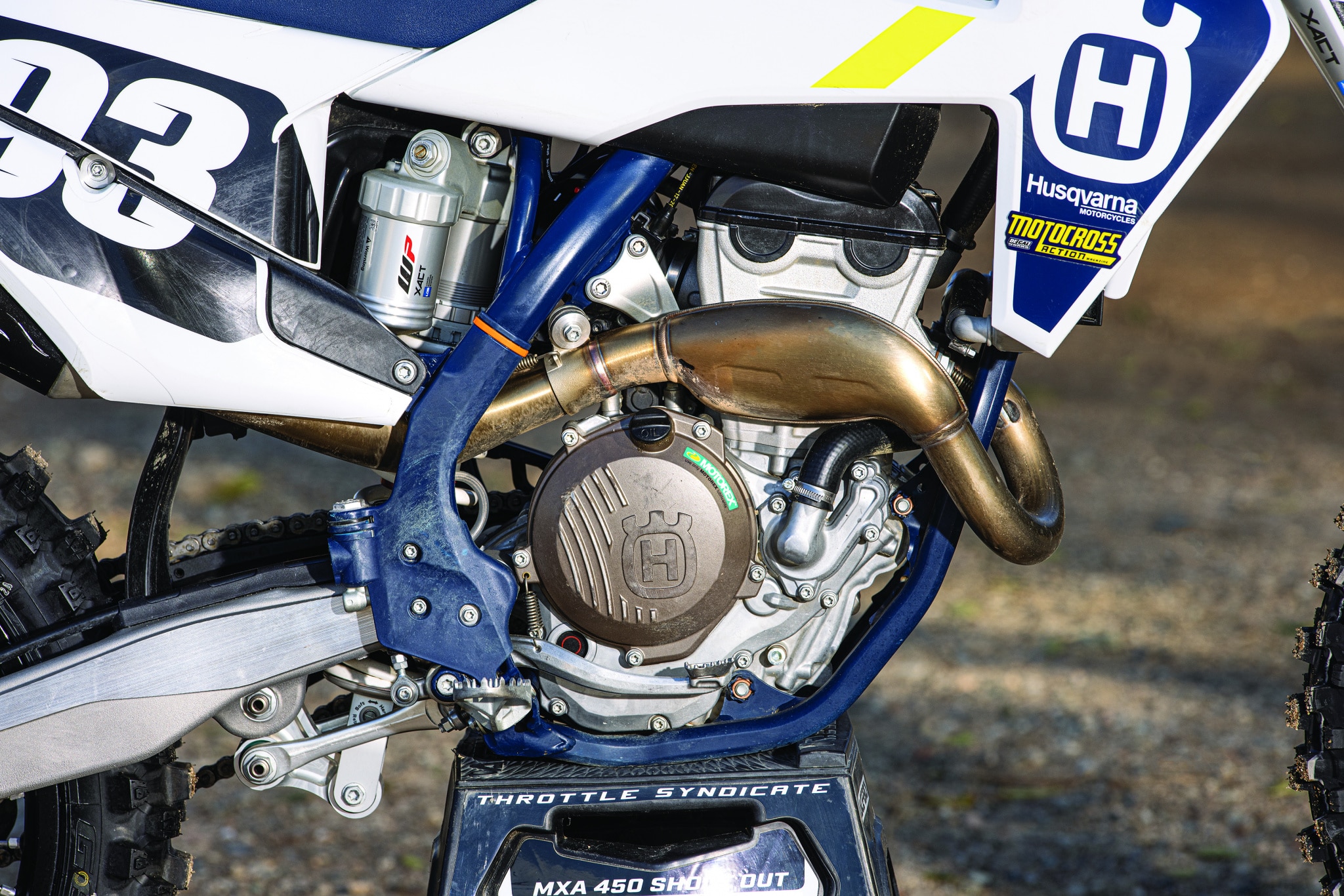
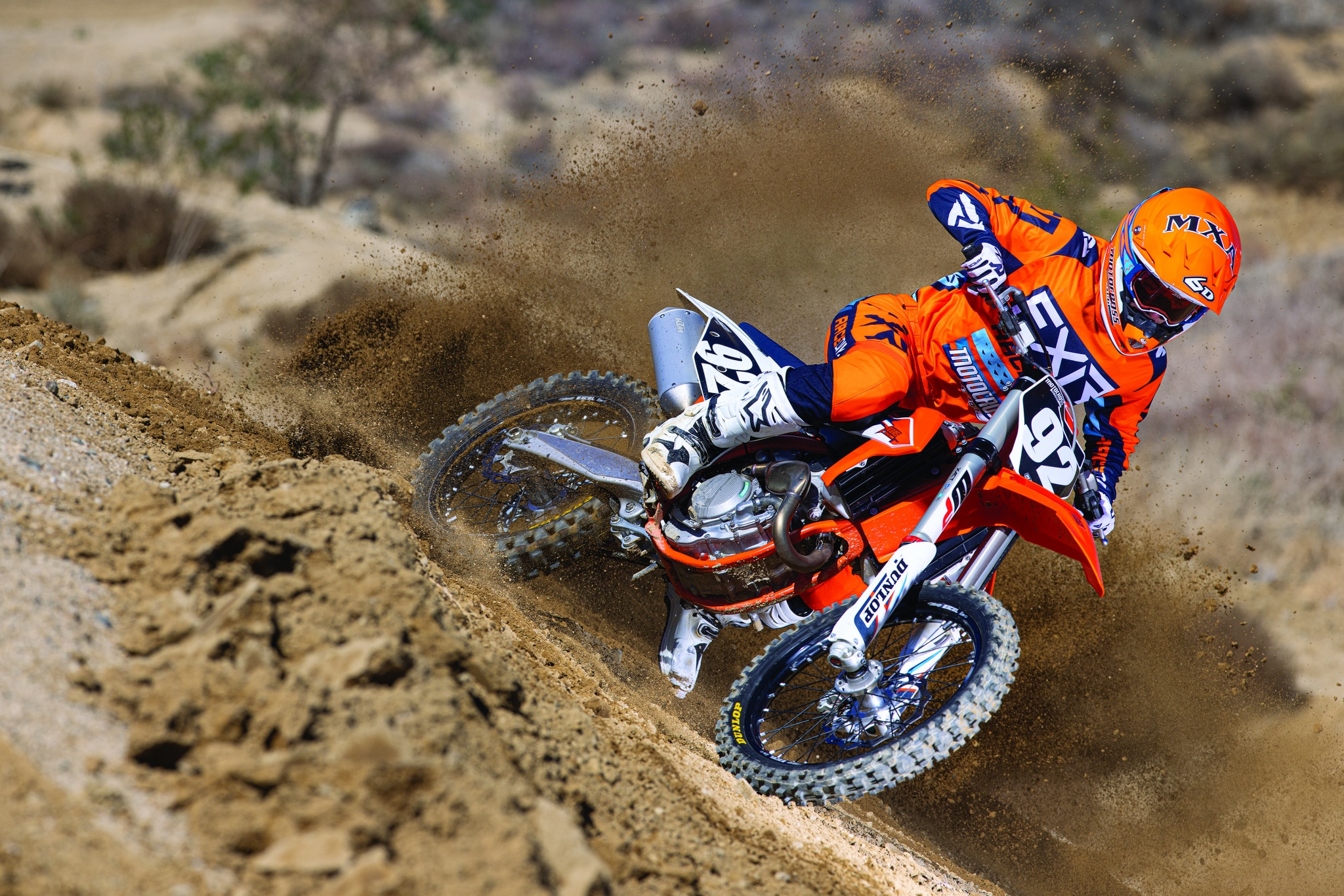
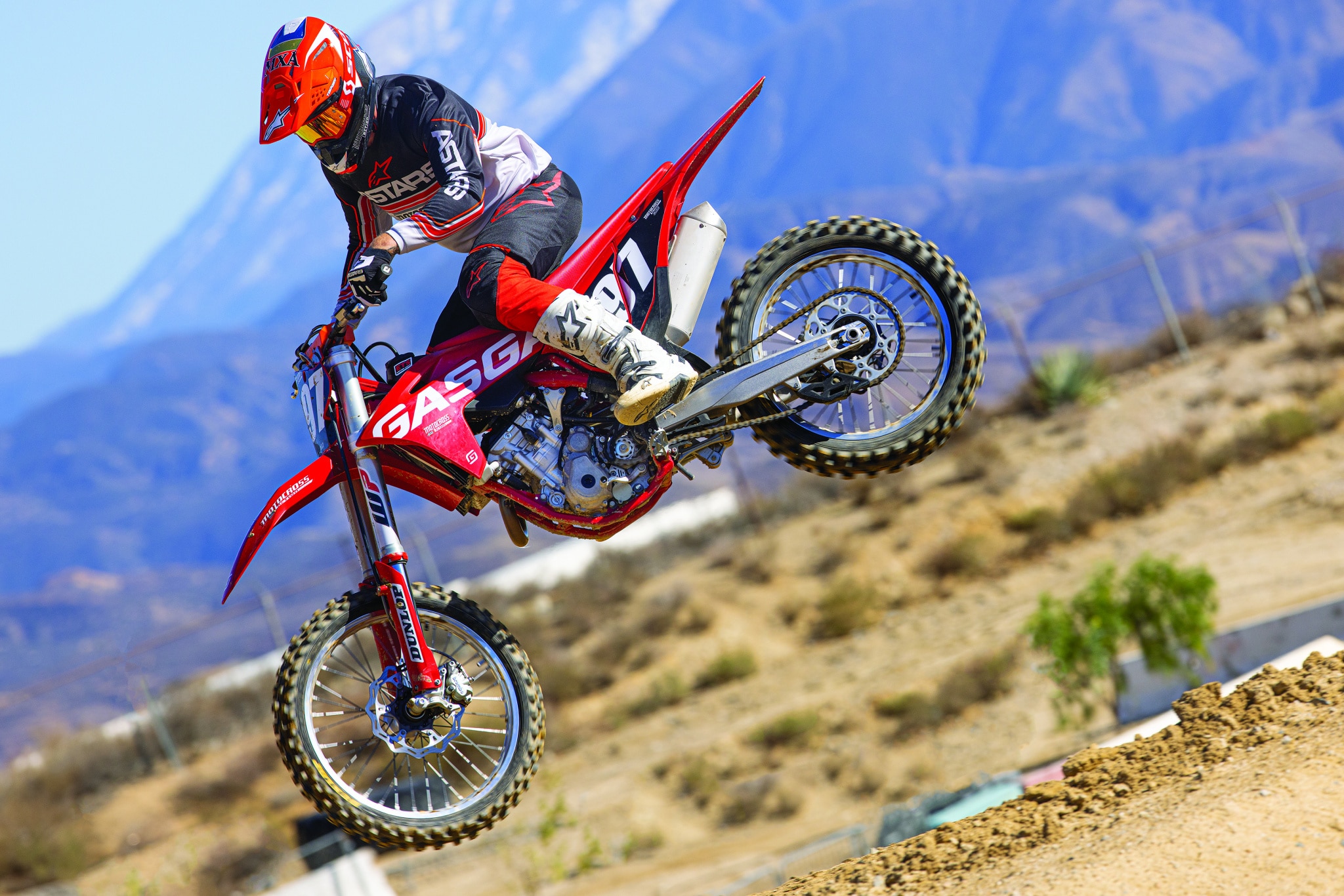
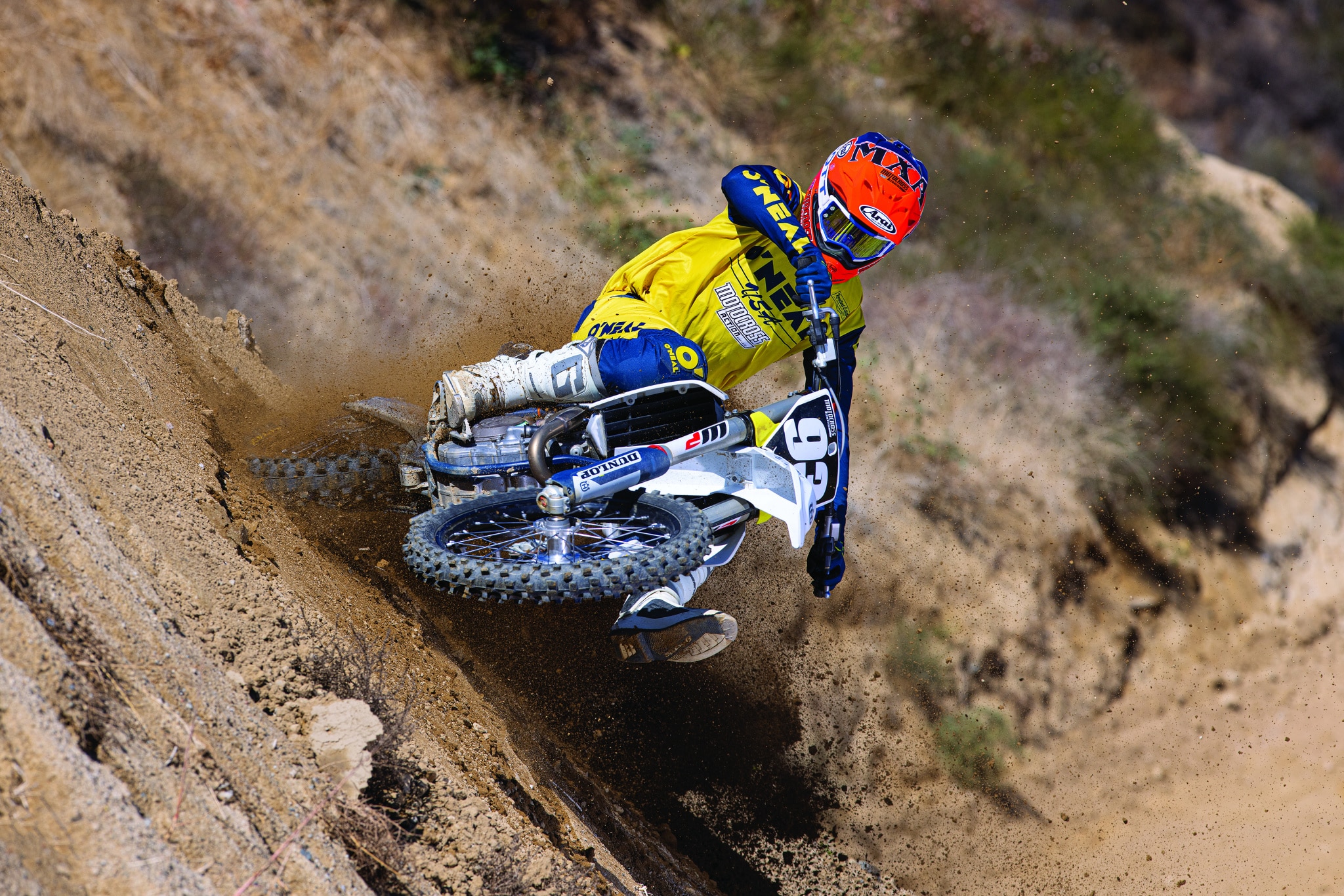
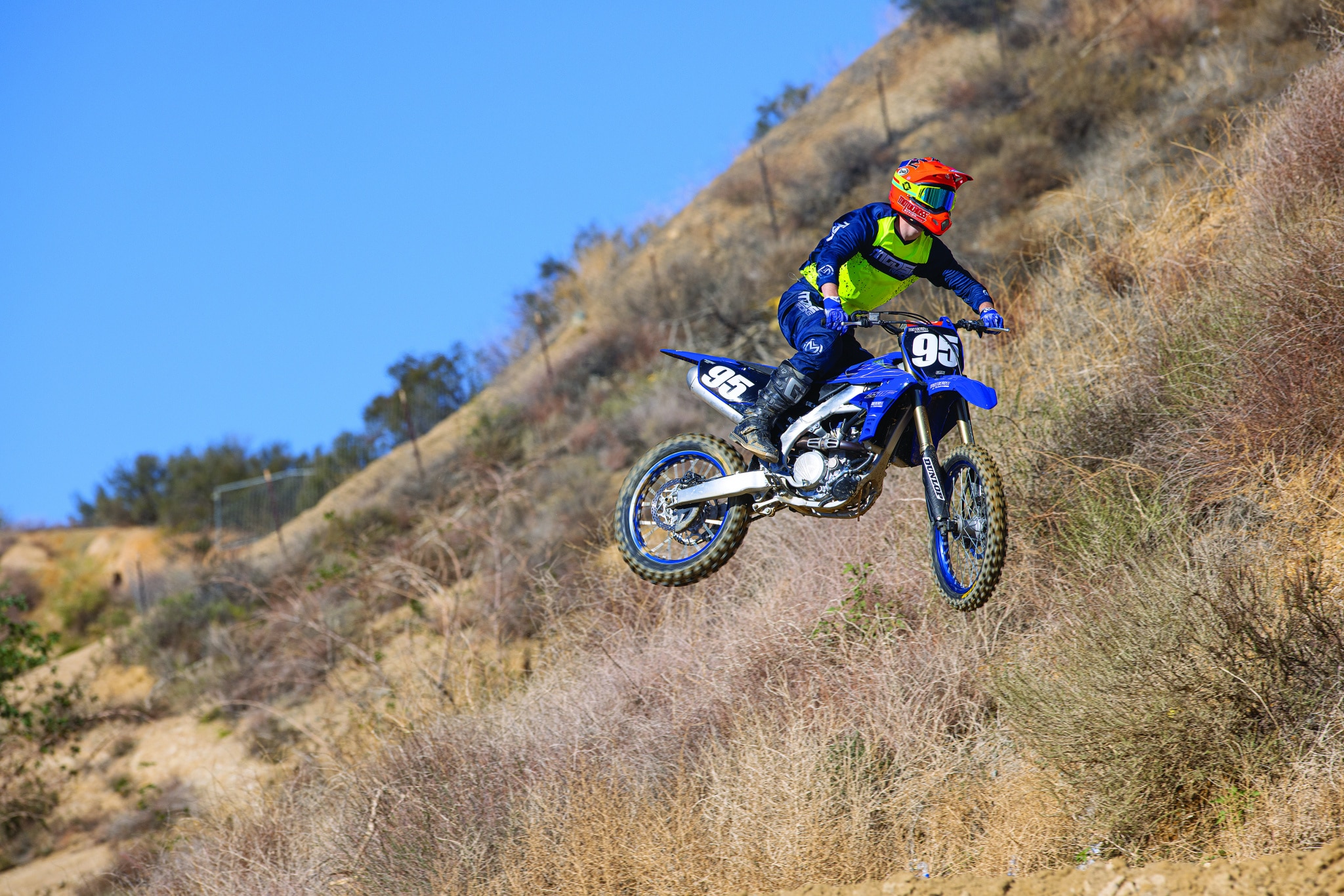
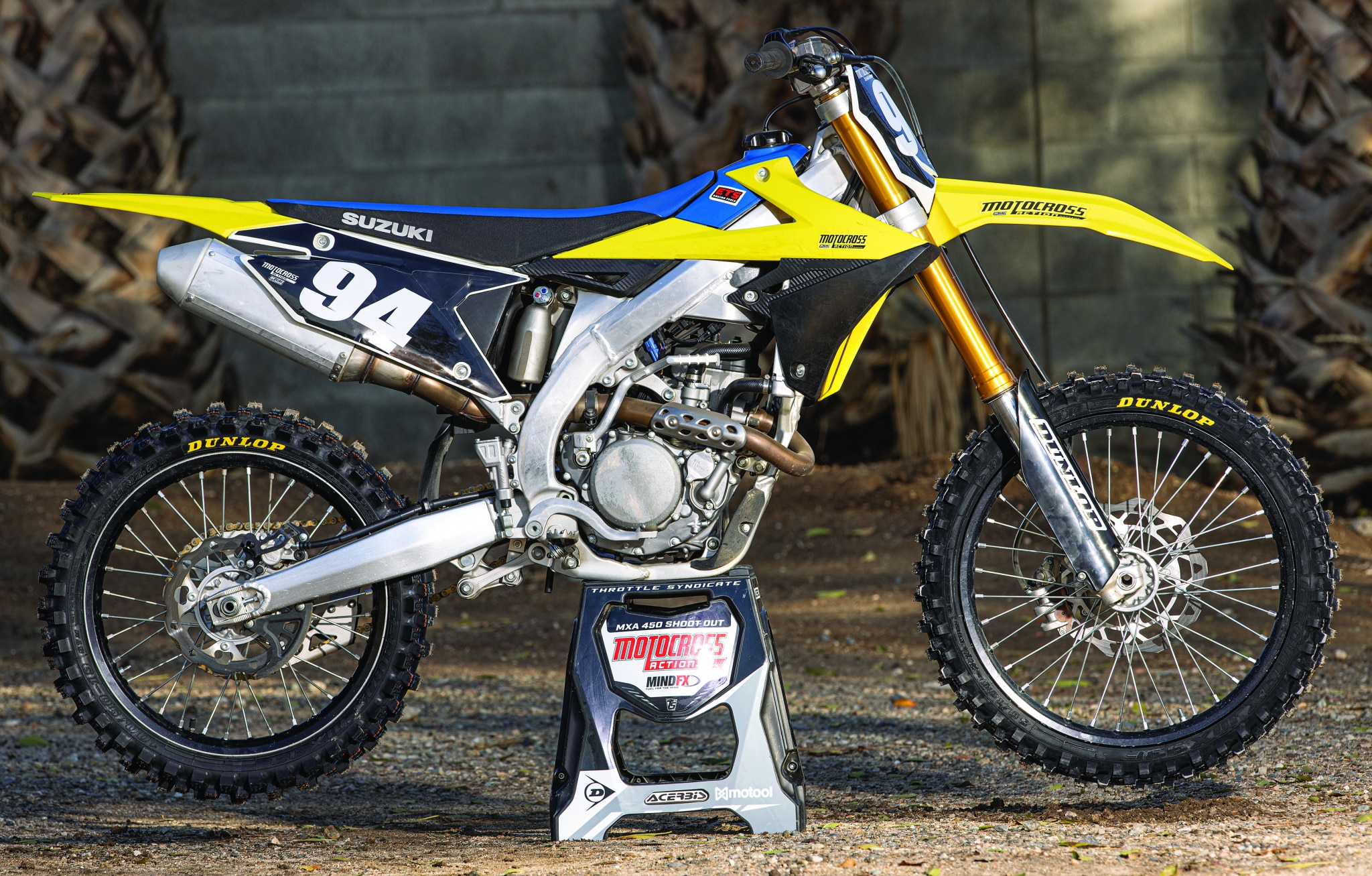

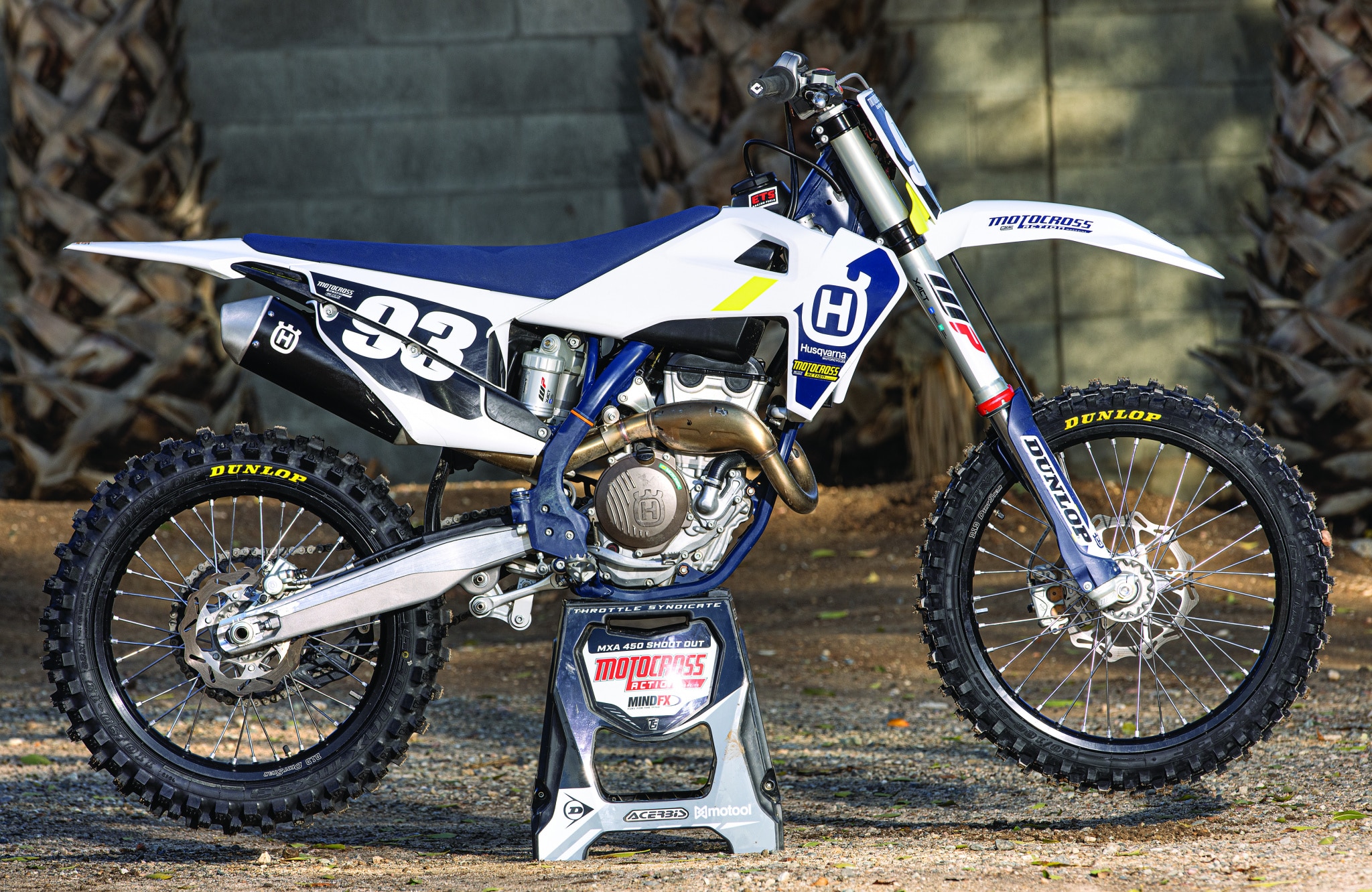
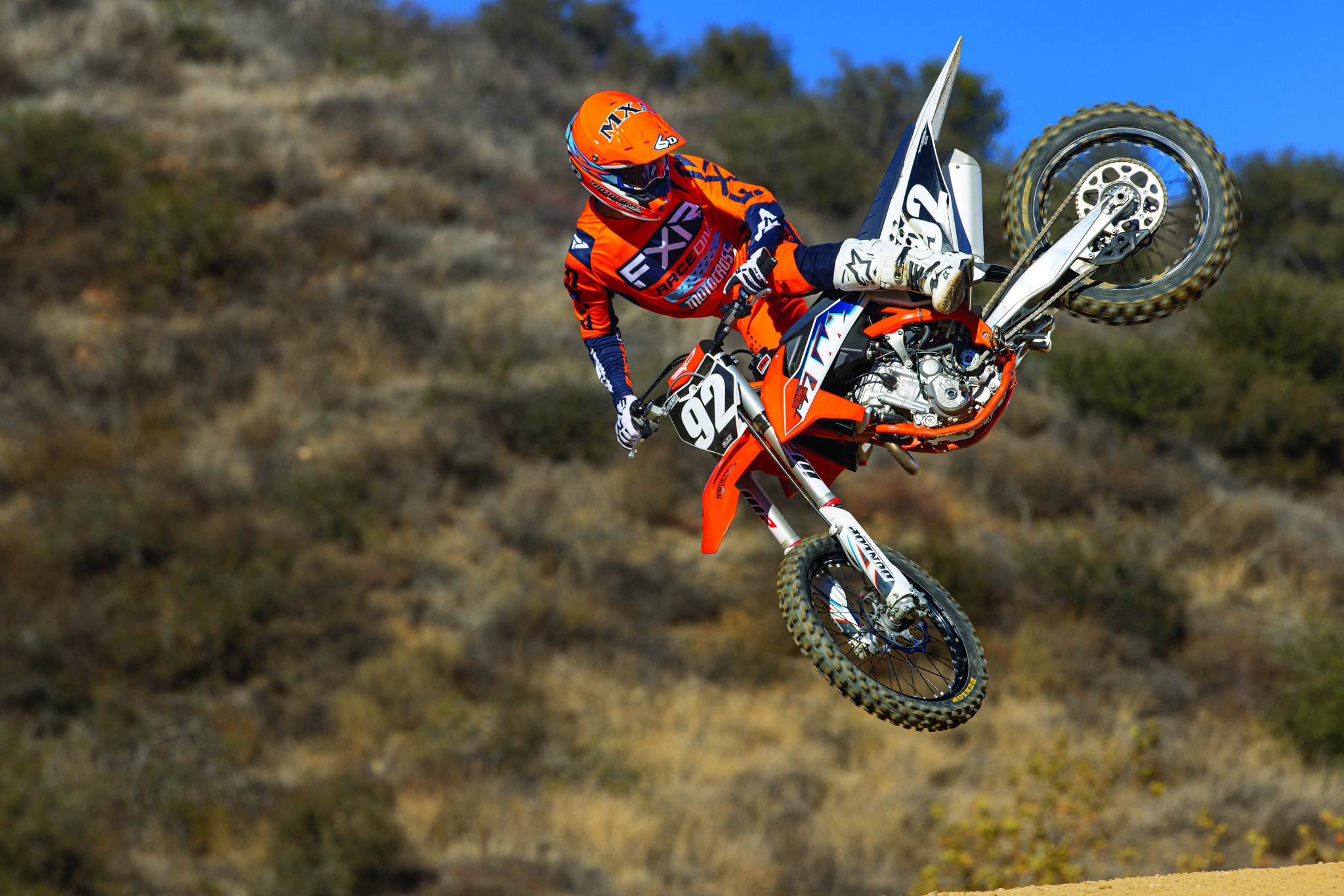
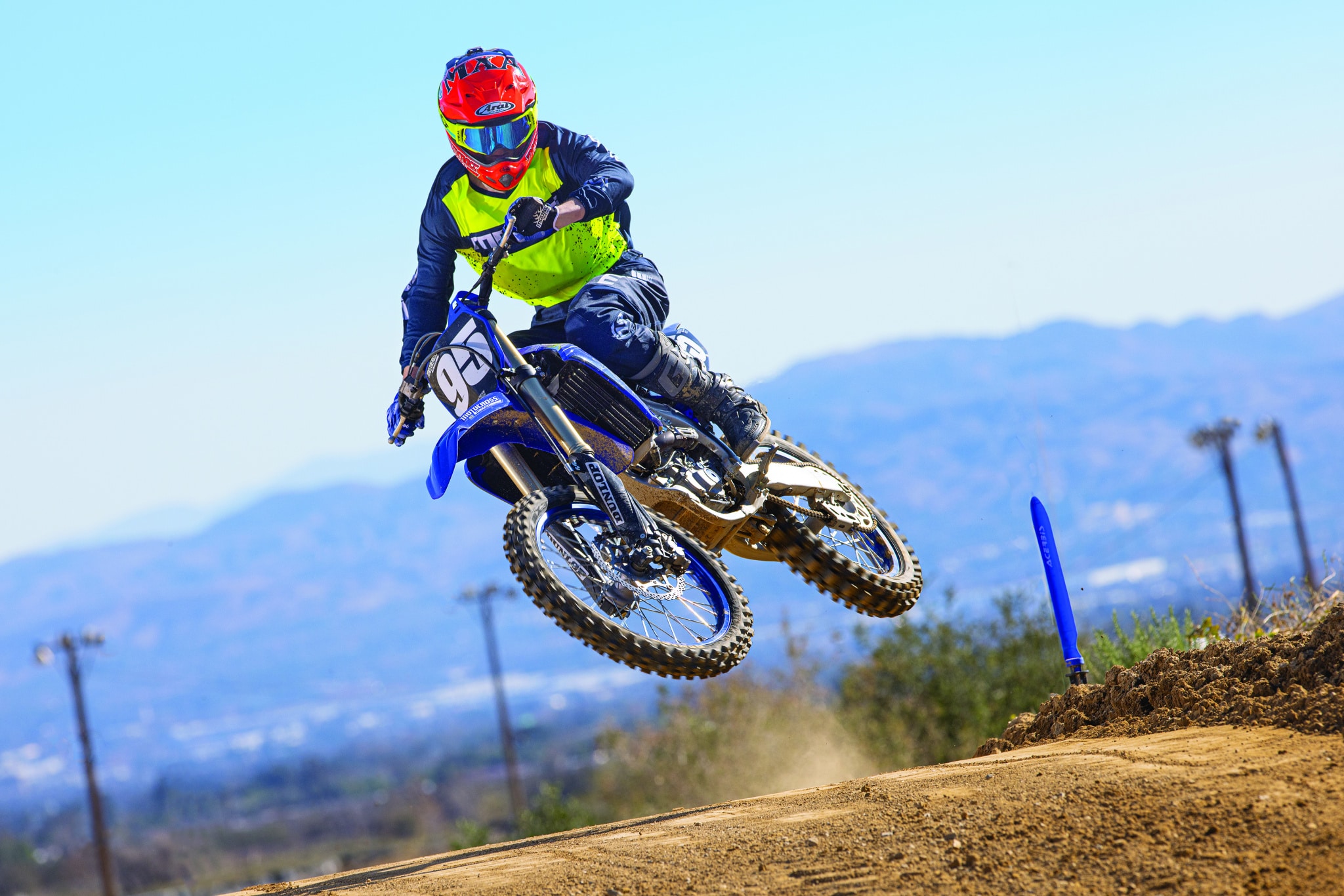
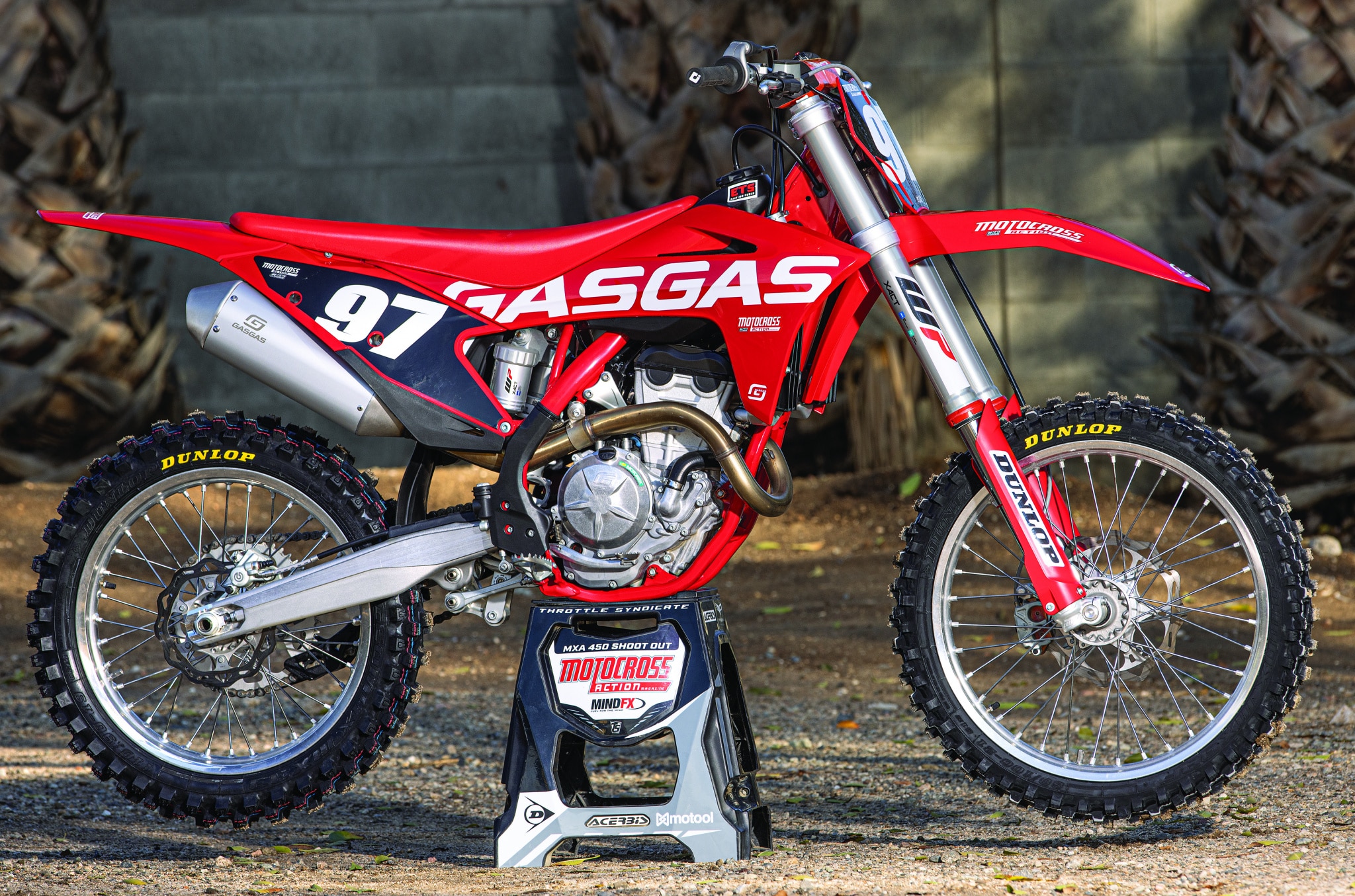
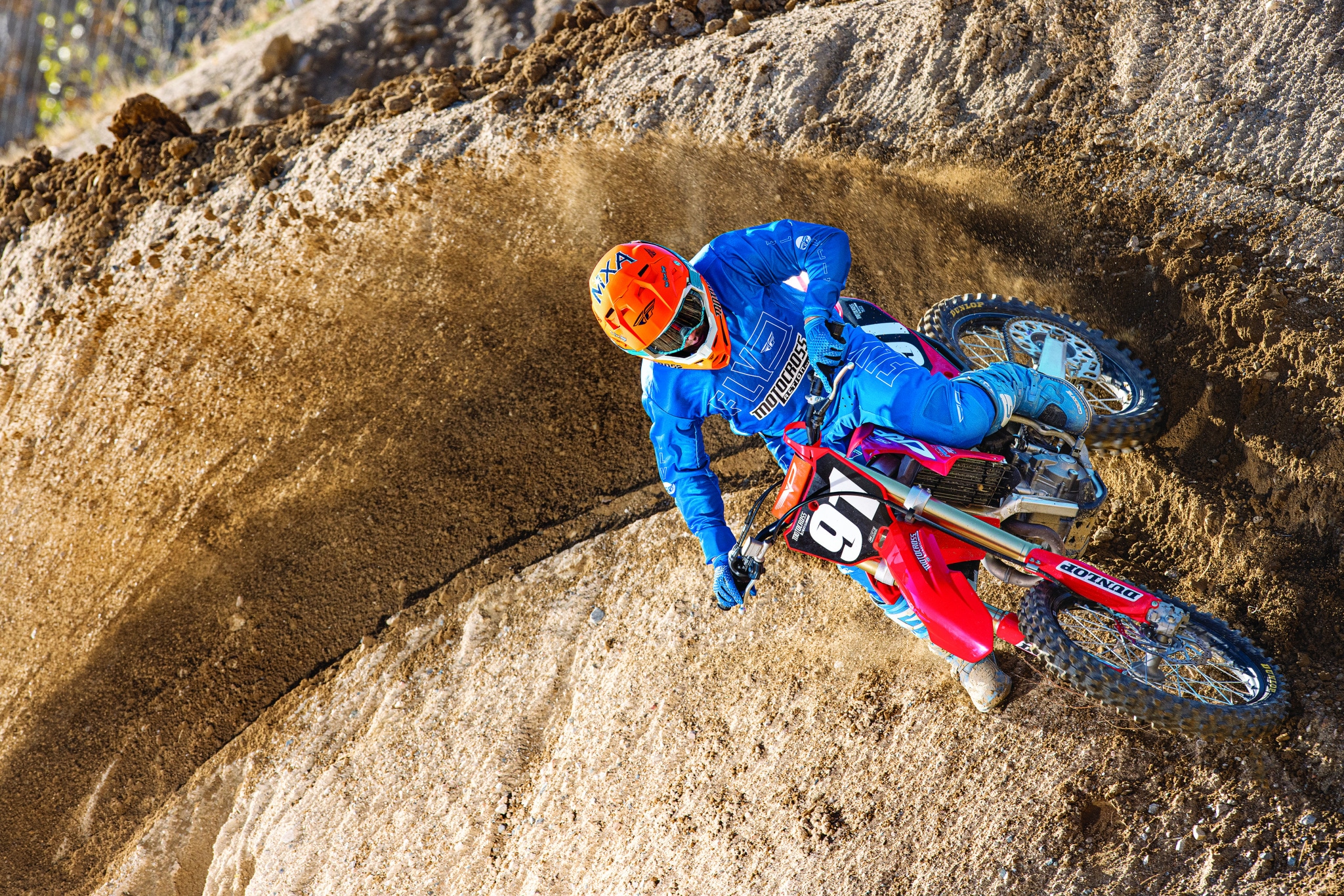
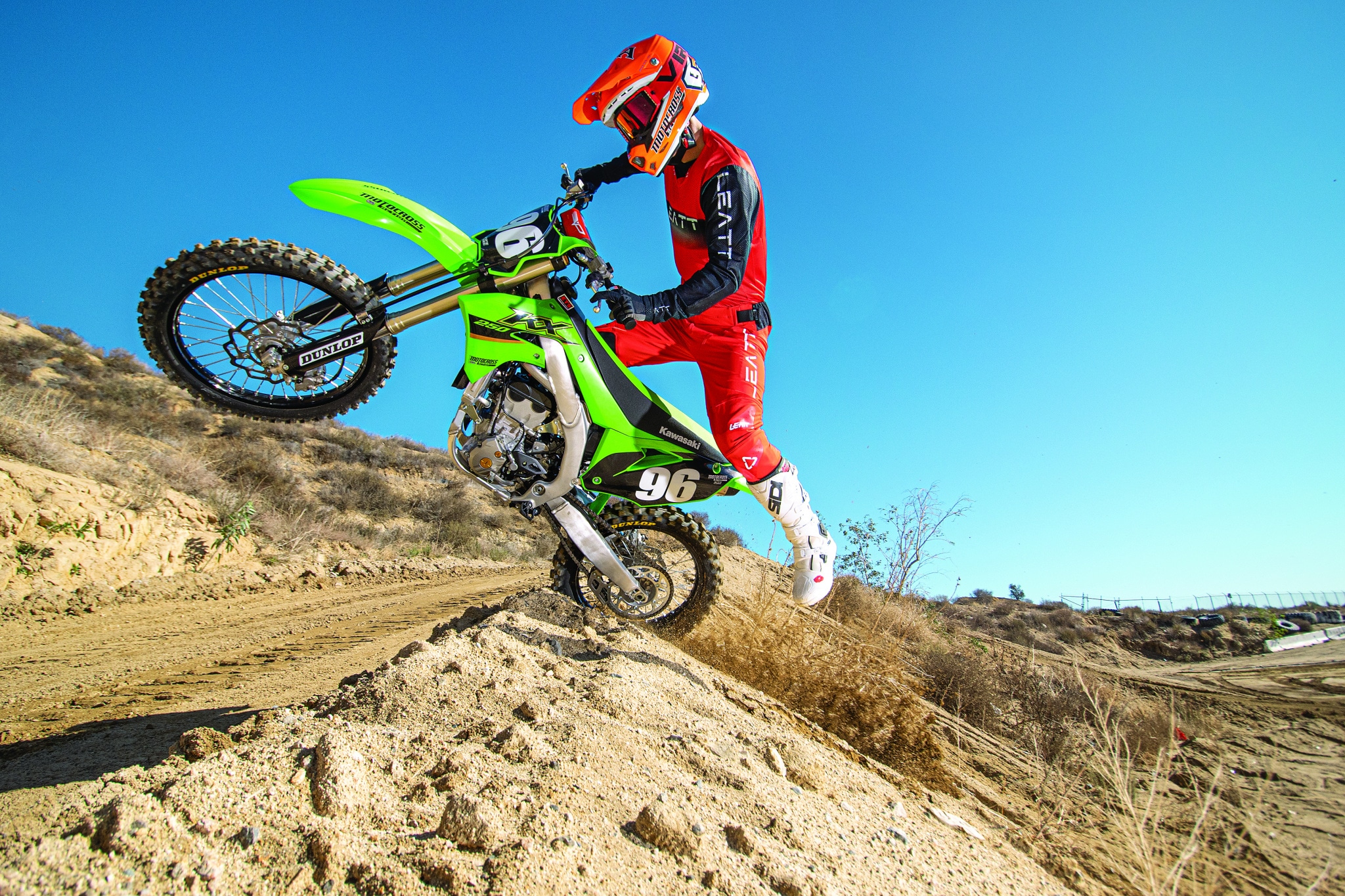
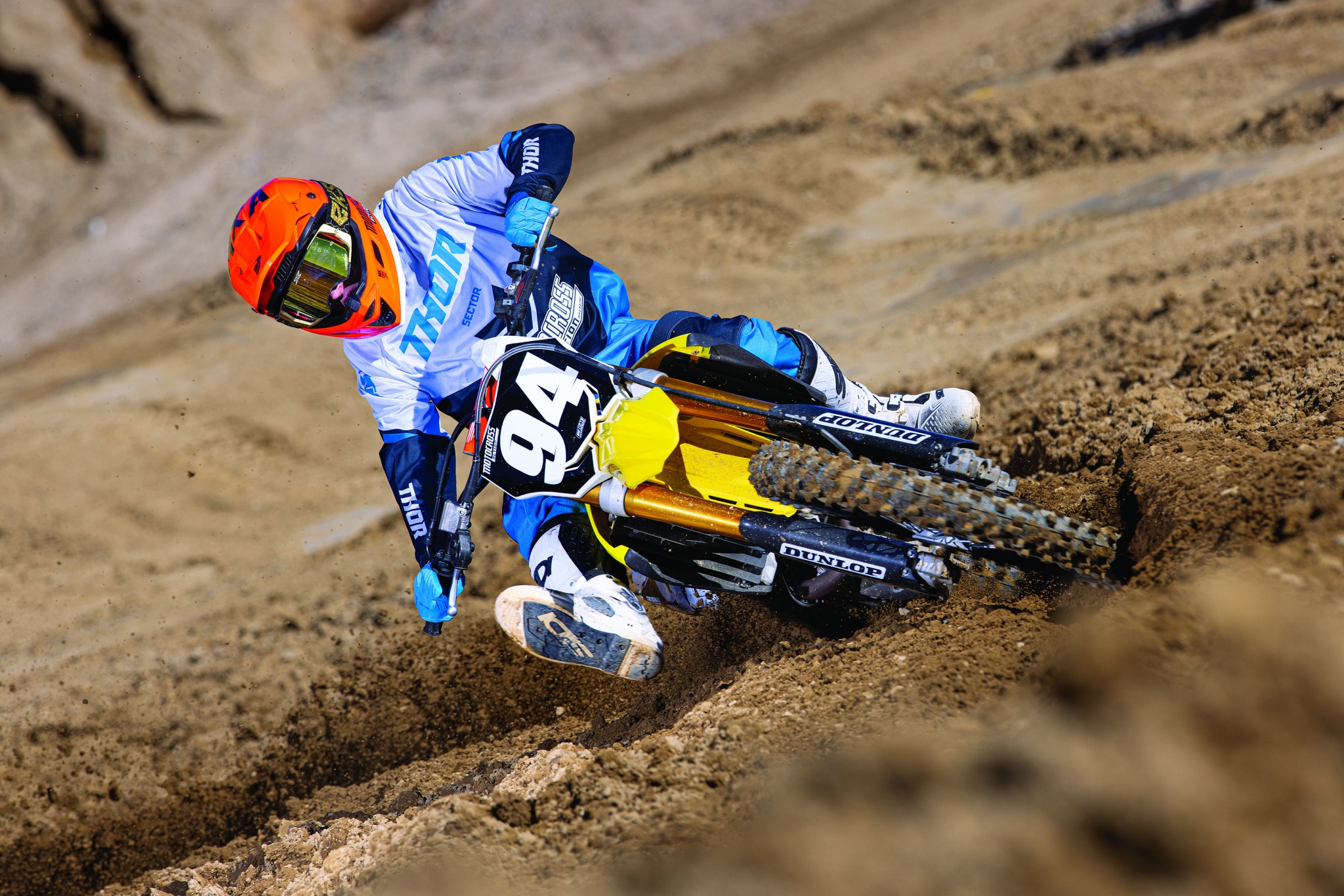



Comments are closed.